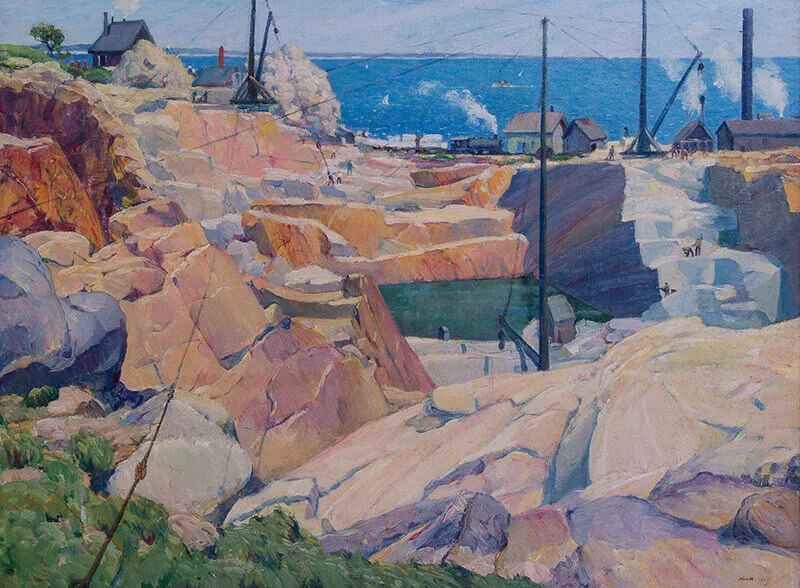“Babson Farm Quarry, Halibut Point” (Rockport), (1913), (oil on canvas), by Leon Kroll (1884-1974), in the James Collection, Promised Gift of Janet & William Ellery James to the Cape Ann Museum, Gloucester.
The museum commented:
“For 100 years, from the early 1830s through 1930, the granite-quarrying industry was a crucial part of Cape Ann’s economy. First undertaken on a small scale with individuals opening up ‘motions’ to harvest stone for their own projects, by the end of the 19th Century, quarrying had grown into a big business, employing hundreds of men and boys (many of them immigrants from around the world), and keeping a fleet of vessels busy transporting stone up and down the Atlantic Seaboard. While granite was taken from the earth in all different sizes and shapes, Cape Ann specialized in the conversion of that granite into paving blocks that were used to finish roads and streets.’’
Editor’s note: New England had granite quarries in all six states. After they were abandoned and water rose in them, many became popular swimming holes. Sadly more than a few people, especially teens, died in them by drowning or hitting their heads on the rocks. And some can have toxic materials in them.











